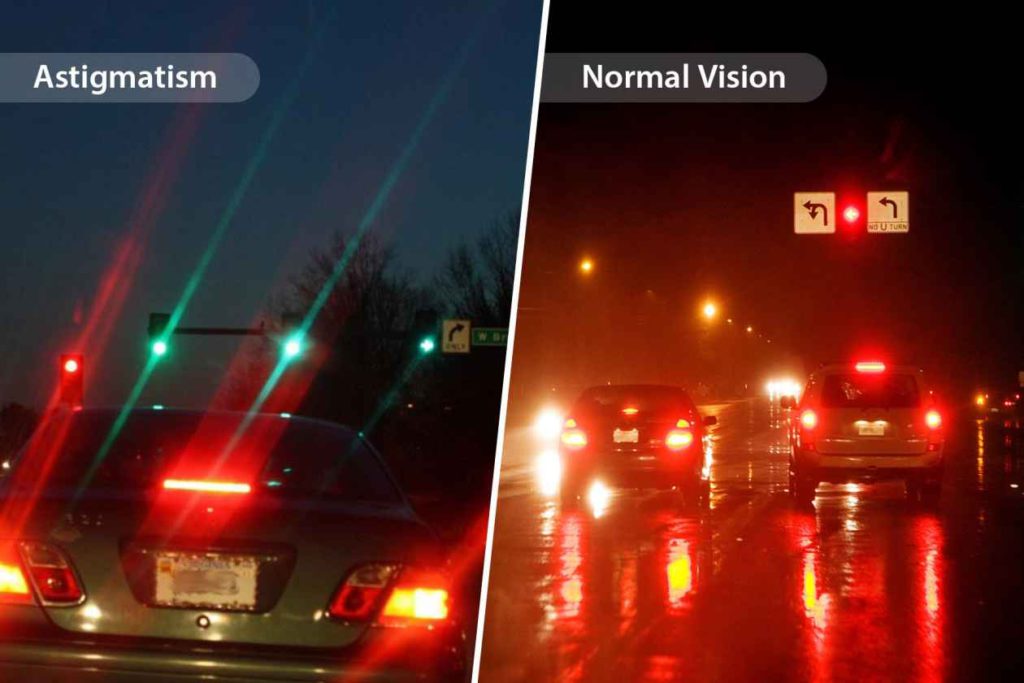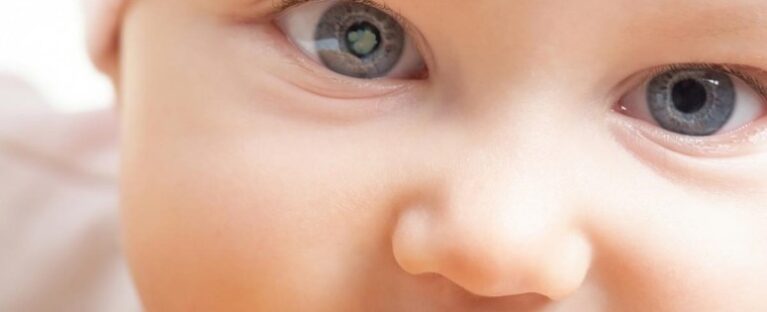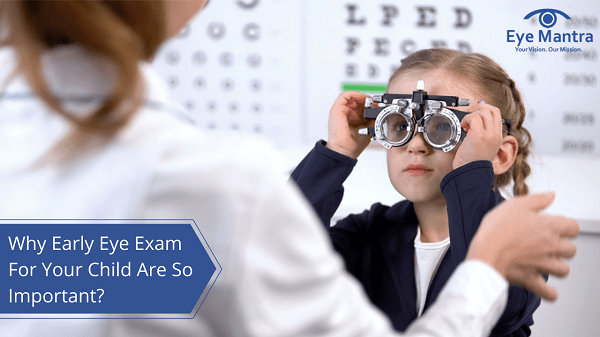Contents
Children’s Eye Exam
A children’s eye exam is an evaluation of the eye health of a child, which is performed either by an ophthalmologist or by an optometrist.
Common Eye Problems Among Children
These are the common eye problems faced by children:
Squint
Squint is also known as crossed-eyes or lazy-eyes. It is a condition in which the two eyes point in different directions. When one eye is pointing straight the other might be pointing in, out, up, or down. It might happen all the time or it may come and go. Treatment is effective when it is started early and includes glasses, patching, and exercising.

Amblyopia
Amblyopia is caused by squint, refractive errors, or cataracts. It is a condition where one eye cannot process a clear picture like the other eye. It leads to poor vision if not treated well or in time. Its treatment includes glasses or patching.
Chalazion
A chalazion is a condition where the upper eyelids get a swelling due to the blockage of the glands present in it. This may also cause yellow discharge. It can happen in one or both eyes. This condition can be treated within three-four months by an ophthalmologist.

Astigmatism

Astigmatism is a common Childhood Eye Disease that creates blurred vision. It happens when the cornea is unevenly shaped or sometimes because of the curvature of the lens inside the eye. An unevenly shaped cornea or lens blocks light from concentrating correctly on the retina. As an outcome can be seen -vision becomes blurred from any distance. This can lead to stress on the eye and headaches. Astigmatism often happens with other vision diseases like myopia and hyperopia. Together these vision conditions are related to refractive errors because they change how the eyes bend or refract light.
A comprehensive optometric test will involve testing for astigmatism. If needed, your optometrist can give eyeglasses or contact lenses that improve astigmatism by changing the way light enters the eyes. Its common symptom is blurred vision.
Epiphora
Epiphora can happen at any age. It may create a problem in one or both eyes. The 2 principal causes of watering eyes are blocked tear ducts and extreme production of tears. Epiphora indicates the overflowing of tears due to impairment of lacrimal drainage. This happens due to a disorder in the balance between tear production and tear loss. Epiphora is often caused by tear film and ocular surface difficulties rather than by anatomical obstruction of lacrimal drainage. Conjunctivochalasis is an under-recognized condition of the upper lacrimal system epiphora. Its symptoms include Diminished vision, Swelling around the eyes, and redness in the eye.
Hyperopia

Hyperopia is also known as farsightedness. It is a situation where a child can see objects from a great distance clearly than the object present near them. The condition is usually applied to hypermetropia preferably hyperopia. Farsighted people usually have headaches or eye strain. Even may squint or feel fatigued when performing work in the near range. This vision difficulty happens when light rays penetrating the eye focus on the back of the retina, rather than straight on it. The eyeball of a farsighted person is less than normal. Its symptoms include Eyestrain and Headache.
Pediatric Cataracts

A pediatric cataract is a becoming cause of childhood blindness. Blindness related to pediatric cataracts can be managed with early identification and proper management. Most cases are diagnosed in regular screening. Whereas some may be identified after the parents have seen leukocoria or strabismus. The risks factor includes glaucoma, retinal detachment, infection, and the demand for more surgeries. After surgery, children often need some order of contact lenses, intraocular lenses inserted in the eye, or glasses. If amblyopia has occurred, the child may require patching. This treatment includes covering the stronger eye to stimulate vision in the weaker eye. Symptoms include Gray or white cloudiness of the pupil, Red Eye and Nystagmus
Myopia
Myopia is a refractive error found in Children’s Eye Diseases. It is when the eye does not refract light well. Light does not converge perfectly so images are not clear. In myopia, close things look clear but far objects appear blurred. The word myopia was added due to the habit of myopic people of half closing the eyelids while looking at far objects, so that they may have the support of a stenotic slit. It happens if the eyeball is too large or the cornea is too rounded. As a result, the light penetrating the eye isn’t adjusted correctly, and far things appear blurred. Refractive surgery can decrease or even reduce your need for glasses or contacts. The most popular procedures are done with an excimer laser. Symptoms include Variation in blood sugar level, Eye strains, and headaches
CRVO (Central Retinal Vein Occlusion)
The retina has one main artery and one main vein. The vein is called the central retinal vein. CRVO is a blockage of this vein that creates the vein to leak blood and excess fluid into the retina. This fluid often gets in the area of the retina contained for a central vision called the macula. When the macula is hit, the central vision may grow blurry. There are 2 types of CRVO – Ischemic CRVO and Non-ischemic CRVO and can be Children’s Eye Diseases.
Importance of Children’s Eye Exam
- Eye exams for children are important to maintain a healthy vision for your child. Eye exams detect any conditions or diseases that may affect the eye and the safety of your child.
- Statistics show that 25% of school children are affected by vision problems which affected their performance in school.
- When proper eye exams are performed by experienced ophthalmologists, any vision problem can be detected at an early stage and treated within time.
- The eye specialists at Eyemantra Eye Centre are aware of the fact that children require special nurturing and care to achieve their full potential. The team of professionals ensures the best eye care for your child.
When To Get Your Child’s Eye Tested?
The first eye exam should preferably be conducted within the first 6 months of your child’s birth. After which an eye exam should be conducted in every 3 years. During school years, eye exams should be conducted in every two years.
If your child has any refractive errors or other vision problems, then their eyes should be examined every few years or as prescribed by your ophthalmologist.
When Your Child Needs Immediate Eye Exam?
A child with vision problems will have the following symptoms:
- Poor Handwriting
- Headaches
- Eye Twitching
- Squinting
- Poor eye tracking skills
- The problem in maintaining eye contact
The procedure of Eye Exam
Ophthalmologists are specially trained to examine pediatric patients. Special tools and techniques which will not require the child’s feedback are frequently used for children who have not started speaking. All the procedures are painless and are specially designed for children.
Infants should have a vision like an adult by the time they are 6 months in aspects of focusing ability, color vision, and depth perception. To examine these the ophthalmologist uses the following tests:
- “Fixate and follow”. This is a test to examine where the infant can fixate on an object and can follow it’s path properly.
- Doctors test the pupil if the pupil opens and closes in the presence of light.
- Preferential looking is a test, where a card with striped borders is used to attract the gaze of the infant to the border.
Which is The Leading Hospital For Your Child’s Eye Exam?
For your child’s eye care, Eyemantra Eye Centre is the best eye clinic and some of the top pediatric ophthalmologists in Delhi, who understand the importance of healthy eyes and good sight for the overall development of a child, work with us.
The environment in the pediatric ophthalmology department is always relaxed, and the staff is always eager to play with the children, ensuring trouble and hassle-free eye check-up for your precious little one. To book an appointment-Ph: 91+9711115191



